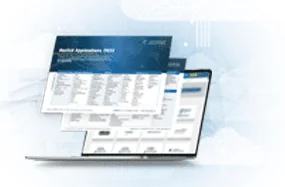The Golden Rule of Report Design – ‘What You Show Is What They Need’
Oracle Primavera P6 R8 is an invaluable tool for many project management requirements. From tracking enterprise project portfolios to drilling down to the smallest, yet sometimes the most critical details, P6 R8 helps project management teams organize their work efficiently and effectively. Frequently, project teams also need to generate reports on different aspects of the project – not only for themselves, but also for senior management and other stakeholders.
Report design is an important element here. People outside the daily project activity who need certain key project information may not have the time or the motivation to read through the detailed technical reports used within the project team. They will need reports that tell them exactly what they want to know: no more, no less. If there is no standard report format that meets this requirement, a new report may need to be designed.
P6 R8 has a default package of reports, ranging over information snapshots like Activity Look Ahead, Resource Role Skill Sets and the Risk Scoring Report, to name just a few. Developing and generating reports from P6 R8 EPPM now also requires another Oracle application, BI Publisher (Oracle Business Intelligence Publisher). While standard or default reports can be published with a few clicks, modifying reports or creating new ones for specific audiences is more complex. It requires specialized skills in the use of the BI Publisher application, understanding of database principles and experience in development languages.
Now comes our golden rule for report design. It’s a crucial rule to have in mind. Otherwise the richness of the functionality within BI Publishing can too easily lead to report designers becoming too absorbed by the technical resources at their disposal – and forgetting why the report needs to be created in the first place. The golden rule is all the more important if the report users and the report designers are not in immediate contact with one another: for example, a client using P6 R8 hosted by LoadSpring that has asked LoadSpring to develop a custom report.
The report design rule is simple: What You Show is What They Need. To start finding out what the end-user needs, ask the following:
What questions are you, the end user, trying to answer?
This key question is the starting point for finding out what information should go into the report. Is it program boundaries, deadlines, budget status, resources/staffing needs, or projected skill sets, for instance?
Who is the intended audience or recipient of the report?
This question will help define the format of the report. For a C-level audience or top-level program managers, the most suitable format may be ‘at-a-glance’ graphically presented information. In other cases, tabular information in a spreadsheet format may be more appropriate, especially if the report users then want to copy data over to other files.
How much information is necessary?
Too much or too little information reduces the usefulness of the report. Find out what level of detail is required to correctly support the business processes involved.
How frequently is the information required?
Besides helping to specify how often the report is generated and sent, this information may help you decide on the report format that best serves the frequency of updating required.
Designing an effective report is a matter of getting the right information into the right hands at the right time. By following the golden rule – ‘What You Show is What They Need’ – and asking the questions above, you’ll be on track for meeting user needs and achieving user satisfaction. Call LoadSpring if you need help creating effective reports (978) 685-9715.











